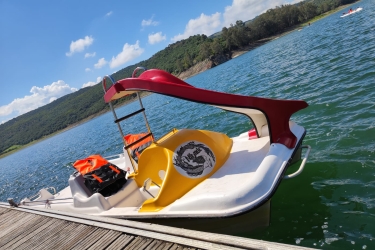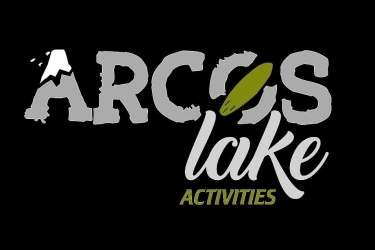Fuencaliente.Old laundries.
Where are they located? Click here to open it in Google Maps .
We access the spring from the town of Bornos (Cádiz), following the streets that lead us to the pier. Once there we take the path called “La ribera del embalse de Bornos”, which is none other than the old route of the Ferrocarril de la Sierra, Jerez-Almargen. We advance about 250 and go down towards the shore of the reservoir whenever it is well below its capacity; On certain occasions it can be accessed directly from the Embarcadero along the old Camino de la Angostura. After passing through the La Sarna and El Piojo springs, we will find the structure of the washhouse, very deteriorated, although with many well-placed “washing-tubs” or sinks, of various materials and appearance, some of them fragments of grinding stones from nearby mills. Underwater today. In one of its corners is the Fuencaliente spout, or another of those that it seems to have had, from which a good stream of cold water flows. If we climb to the upper part of the washing place, we can see the arrival of these waters through the bottom of a large hole. They could easily wash between 40 and 50 laundresses at a time. As a spring, at the time, it irrigated the so-called Huerta de la Fuencaliente or Fuente Afuera and the orchard of La Aceña, all of them very famous for their beautiful pomegranates and exquisite apricots.
Hydrogeological description
The area where this washing place and its associated fountain are located is related to an area of great water richness, called by some authors El Fontanal de la Angostura. It is located a few meters from Guadalete, at the eastern gate of the original Angostura, very close to the town of Bornos, although in the Arcos de la Frontera district. The swamp ended up submerging this area with its waters in the 1950s, a traditional strip, which by extension we can call La Angostura, occupied by orchards, mills (de la Aceña, de la Gredera, de las Hoces...), public laundry (from Fuencaliente) and numerous springs, some of them with medicinal waters (fuentes de la Sarna, de las Calenturas, de la Teja, del Monje). All the waters seem to come from the nearby Sierra del Calvario or Bornos, reaching this front some very close to each other, although with different properties and temperatures. Numerous historiographical, literary and archival documents argue the abundance and quality of the waters of Bornos.
Historical documents confirm the existence of two springs in the same sink: one with cold water and the other with hot water (it is supposed to be around 36ºC).
Architectural description
The distribution that is conserved is a wide rectangle of 7 X 9 m with low collapsed walls. In one corner is the water pipe (currently cold), embedded in a protective box, in turn attached to one of the side walls. In one of the retaining walls of the land there are holes at a low level that could be related to old water outcrops. Inside, the space is divided by several rows of more than 40 individual sinks inclined to facilitate washing. Currently between these rows water circulates freely. At the opposite end of the pipe there is an outlet for the water and two ditches, through which it drains into the reservoir. The oldest, with perfectly visible masonry elements, led its waters to nearby orchards. Nearby there are alignments of work possibly related to the remains of a small spa and bathtubs from this thermal spring or the nearby medicinal spring of La Sarna.
Historical background
Fray Pedro Mariscal (1731: Treatise 1º Ch. III: 5-8) in the History of Bornos and its Region gives us a very complete account of the natural sources close to the town in which he names our source: «Another one is next to half a day from Bornos, and they call the hot spring, also excellent, and so copious, that it waters a good amount of garden, which they call fanegas [¿]. This fountain comes out of a ravine, which is formed by the mountain range of hills, on whose eastern slope Bornos has his seat; They call this ravine narrowness, and it was arranged by the Author of nature to give way to the Guadalete river.
Frasquita Larrea comes to count up to a total of seven springs of different waters in the Fuencaliente area: «Day 1 of May [1824]. From here they took us to a place called the hot spring, no doubt because of a spring that they say gushes out hot water. It is difficult to describe the beauty of this place where you can see seven springs of different waters... at the foot of some hills or, better to say, rocks, and at its skirt, orchards that come down to the river... Under some roofs where the women wash, they come out two fountains, one hot and the other cold, two steps from each other, which form the pond for the laundry».
Other information
The laundry room has been declared Andalusian Property Heritage:
http://www.iaph.es/patrimonio-inmueble-andalucia/resumen.do?id=i9683
-
Virtual reconstruction of the laundry room:
https://youtu.be/zwisSNKCdpQ
Article: Know your sources.
Name of the author(s) of the file: J. A. González Castilla and P. Sánchez Gil


